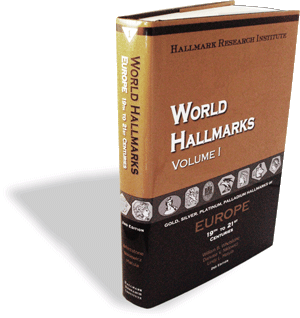
Air and water oxidize metals and can make them dull. Keep them looking new with periodic cleaning. Save money and the environment by making your own inexpensive jewelry cleaner.
Basic recipe for cleaning jewelry
* 1 tbsp dish washing detergent
* 1 tbsp baking soda
* 1 tbsp household ammonia
* 3 cups warm water
Combine ingredients in a bowl and mix well. Pour into a glass jar and cover tightly. Label jar for future use and keep out of reach of children. To use, soak jewelry in the solution for 1-10 minutes (depending on how tarnished it is). Swish intricate pieces in the solution to get into the cracks and crevices. Use a toothbrush or a well-washed mascara brush for hard to reach places. Rinse and dry with a soft clean cloth.
 Don’t soak pearls
Don’t soak pearls in this solution.
Instead, rub them gently with a soft chamois cloth dampened in the solution.
Pearls will dissolve in vinegar.
Do not combine this solution with chlorine bleach – hazardous fumes will result!
CLEANING GOLD JEWELRY
Pour cider vinegar in a shallow glass container. Place gold jewelry in the vinegar so that it is covered completely. Keep all pieces separated. Nothing should be touching. Let the jewellery sit in the vinegar for 15 minutes. Remove the jewelry and wipe clean with a soft, clean cloth. The gold should be completely clean.
CLEANING SILVER JEWELRY
1. Line a glass bowl with aluminum foil, shiny side facing outward.
2. Place the jewelry you want to clean in the bowl making sure it’s touching the foil
3. Cover the jewelry with baking soda – just enough so that you can’t see it.
4. Add boiling water – enough to immerse the jewelry.
5. Let soak for 3 to 5 minutes ( or less if it’s not really dirty).
6. Use tongs or a fork to lift out the jewelry ( you don’t want to get burned) and rise under cold water. And voila ………. you have sparkling jewelry.
If the jewelry is very dirty or very tarnished, then you may need to repeat the process. Just add a little more baking soda and more boiling water. Making sure the water is boiling is the secret, if there is one. This method works great on sterling, silver, gold and costume jewelry metals. But do be careful if there are crystals glued into a setting and limit soaking. No more than 90 seconds or you might melt the glue. Also, don’t immerse natural pearls in this solution - it’s too caustic. It is however, fine for most gemstones and works wonders on cubic zirconia And in case you’re wondering ….it also works fab for cleaning silverware, silver frames or any silver home decor.
If you don’t have aluminum on hand, you can use white distilled vinegar. Mix 2 tbsp. baking soda in 3.4 fluid oz. or almost 1/2 cup (100 ml) of vinegar. Soak silver items in the mixture for 10 minutes. Rinse thoroughly with water and dry the items with a soft, clean cloth. Repeat if necessary
CLEANING COPPER, PEWTER & OTHER METALS
Dissolve 2 tsp. of salt in a cup of white distilled vinegar. Place a few tablespoons of flour (any kind) into a shallow container. Add some of the vinegar mixture to the flour until it forms a paste. Spread a thick layer of the paste on the metal that needs to be cleaned. Let stand for 15 minutes. Scrub clean with a soft, clean cloth.
CLEANING PLATINUM JEWELRY
The way to clean platinum is to make a mixture of half ammonia and half water. Let the platinum soak in the mixture and then polish with a soft cloth. Be careful if the jewelry contains gemstones. The mixture may discolor or harm gemstones except diamonds. This mixture is not harmful to diamonds.

 Women over a certain age should avoid wearing chokers because this will only draw attention to the neck. Instead wear a pendant necklace that forms a v-shape, that hangs down from the throat, drawing the eye upward.
Women over a certain age should avoid wearing chokers because this will only draw attention to the neck. Instead wear a pendant necklace that forms a v-shape, that hangs down from the throat, drawing the eye upward. Instantly update a classic outfit with a splash of color. Look for funky with a bold color.
Instantly update a classic outfit with a splash of color. Look for funky with a bold color. A single string of pearls and pearl studs for your ears will always have an aging as well as a regal look about them. Update the look by wearing several strands together or find expensive fakes with larger chunky-sized stones, which looks more modern. Pearls will make skin appear more luminescent.
A single string of pearls and pearl studs for your ears will always have an aging as well as a regal look about them. Update the look by wearing several strands together or find expensive fakes with larger chunky-sized stones, which looks more modern. Pearls will make skin appear more luminescent.
 A studded belt with a highly decorative buckle will attract the eye, but always consider where to place it for maximum effect. Unless you have great abs, choose hip-slung, as a belt around the middle tends to cut you in half and shorten the body. A decorative belt replaces the need for long necklaces.
A studded belt with a highly decorative buckle will attract the eye, but always consider where to place it for maximum effect. Unless you have great abs, choose hip-slung, as a belt around the middle tends to cut you in half and shorten the body. A decorative belt replaces the need for long necklaces.














